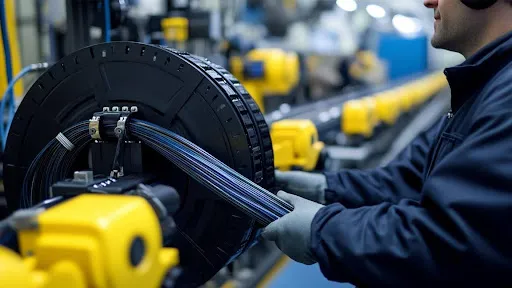Situation
The Manufacturing Excellence team at a leading Optical Fiber manufacturer was responsible for driving innovations by developing new products and optimizing resource utilization. One key metric in this process was After Draw Yield (ADY), which measures fiber production at each stage of the manufacturing process. However, the team lacked visibility into probable fiber ADY in real time and sought to understand how process variables impacted yield.
Challenges
- Limited visibility into probable ADY at each stage of production.
- Lack of clarity on how process, machine, and environmental parameters influenced fiber yield.
- Lack of predictive and scalable models that could dynamically adapt to new data.
- Difficulty in identifying root causes for yield loss, especially in optical sub-processes where 70% of scrap originated.
Solution
We implemented an ensemble of machine learning models to predict ADY and optimize settings across various manufacturing stages. The approach included:
- Exploratory Data Analysis and Modeling
- Conducted extensive time-series analysis, capturing 250 data points over an 8-hour process at equal intervals of 0.4% weight deposited, giving us highly granular process insights.
- Focused on a critical optical sub-process that significantly impacted attenuation and other fiber properties.
- Mapped patterns in high-ADY profiles across 14 key variables with 250 observations each.
- Machine Learning Techniques
- Deployed Random Forest and LASSO regression.
- Random Forest: Assigned relative importance scores to each variable to highlight key drivers of ADY.
- LASSO: Enabled variable selection and regularization in order to enhance prediction accuracy and model interpretability.
- Scalable Automation
- Automated the data pipeline and modeling process.
- Applied the solution across 8 machines initially, with provisions to scale to all 18 spindles.
- Enabled seamless scaling across the plant through a well-documented, automated model refresh—integrating new data sources, any number of input variables, and all machine paths.
Impact
- Increased ADY by 9%, resulting in potential annual revenue gains of $2.5M.
- Boosted production capacity by ~0.6M Fiber Kilometer (FKM).
- Identified and implemented changes to over 75 machine settings.
Business Impact
-
9%
Increase in Fiber Yield
-
$2.5M
Potential Annual Revenue Gains
Let’s move from data to decisions together. Talk to us.

The firm's name is derived from the statistical terms "Mu" and "Sigma," which symbolize a
probability distribution's mean and standard deviation, respectively.

